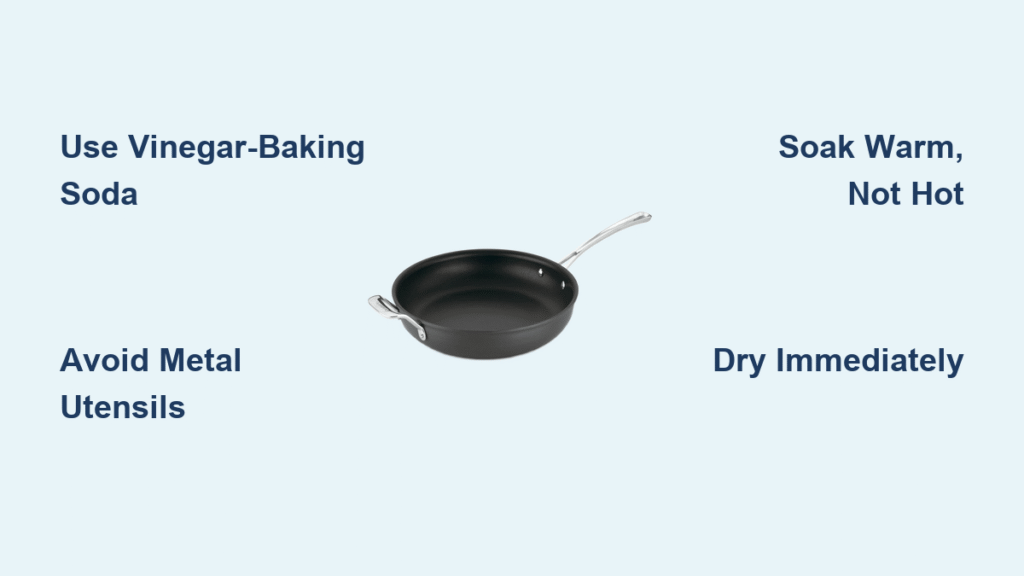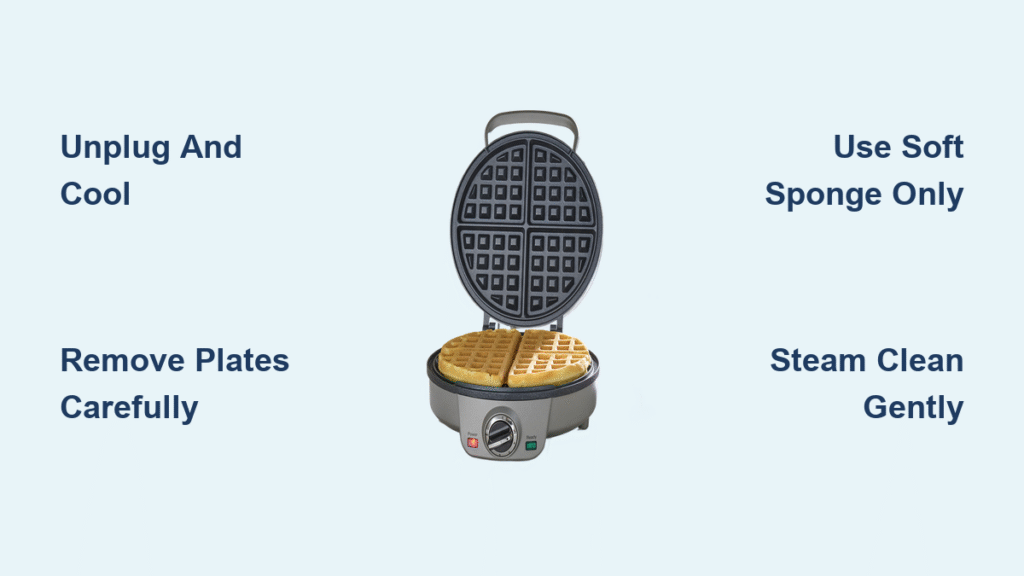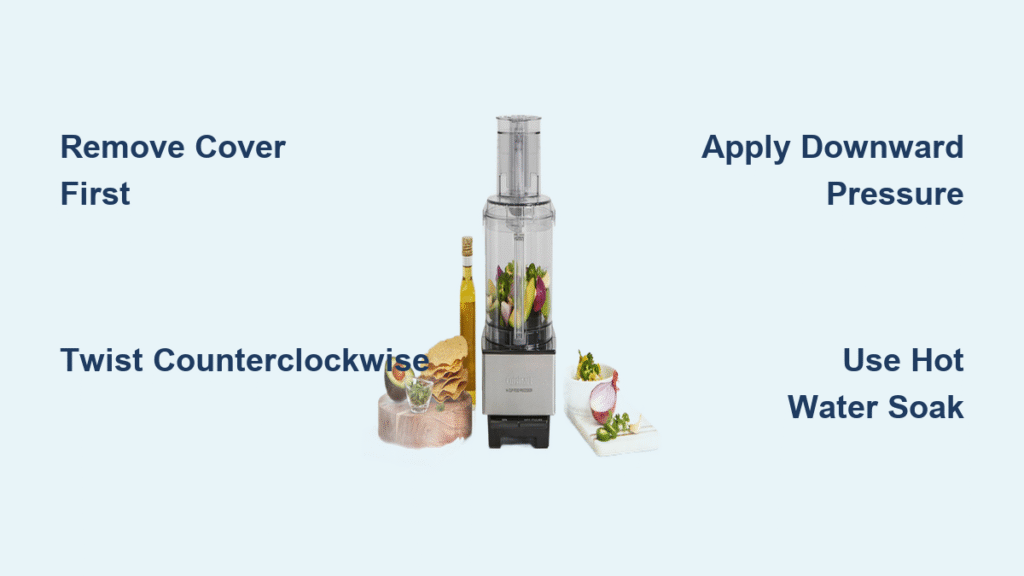That stubborn burnt egg residue clinging to your Cuisinart skillet? You’re not alone. When food bonds to your non-stick surface, it doesn’t just ruin dinner—it signals your pan is losing its magic coating. Most home cooks make critical mistakes that permanently damage their Cuisinart ProCoat pans during cleaning, turning a $50 investment into landfill in months. The truth? Proper cleaning can restore even severely burnt pans while extending their life by years. This guide reveals exactly how to clean Cuisinart non-stick pans using only safe, coating-friendly methods proven to work. You’ll learn the vinegar-baking soda hack that dissolves year-old carbon buildup, avoid the #1 mistake that causes flaking (hint: it’s not what you think), and implement a 30-second daily routine that prevents 90% of sticking issues.
Fix Burnt Cuisinart Pans in 20 Minutes
Soap and Water Method for Light to Moderate Burnt Residue
Time Required: 15 minutes | Difficulty: Easy
Start here if you see browned spots but no blackened carbon. This method handles 80% of everyday cooking mishaps. Critical first step: Rinse loose debris immediately after cooking while the pan is warm (not hot). Fill with hot tap water—enough to cover burnt areas—and let soak 15-20 minutes. This rehydrates dried food particles so they lift cleanly.
Drain water and apply one tablespoon of dish soap directly to the pan surface. Flip your sponge to the non-abrasive scrubbing side (never the green scouring pad!). Work in small circular motions with light pressure—imagine you’re polishing glass. Focus on burnt zones for 30 seconds before rinsing. If residue persists, repeat once.
🛑 Stop Immediately If: You see silver spots appearing. This indicates coating separation, and further scrubbing destroys the pan. Never use steel wool, metal scourers, or chain mail scrubbers—these create micro-tears that accelerate flaking.
Vinegar-Baking Soda Boil for Severe Carbon Buildup
Time Required: 45 minutes (includes cooling) | Difficulty: Moderate
Deploy this when soap fails on blackened, stuck-on residue. Combine 2 cups warm water, 2 tablespoons white vinegar, and 2 tablespoons baking soda directly in the pan. Place over medium heat until it reaches a gentle boil (do not let it boil dry). Stir continuously with a wooden spoon for exactly 5 minutes—the fizzing reaction breaks chemical bonds holding burnt food.
Remove from heat and let cool completely (20-30 minutes). Pour out the solution, then follow the soap-and-water method for final cleaning. This technique safely dissolves decade-old carbon without abrasives.
Pro Tip: For pans with thick buildup, extend the soak time after boiling to 1 hour. Never leave the solution overnight—prolonged acid exposure weakens the coating.
Eliminate Grease Film That Causes Sticking

Extended Soak for Oily Residue
Time Required: 30 minutes | Difficulty: Easy
When your Cuisinart pan develops a sticky, rainbow-hued film (common after frying bacon or searing), fill it with the hottest tap water and add 3-4 drops of dish soap. Soak 30 minutes max—any longer risks water seeping under the coating edge. Drain and wipe with a microfiber cloth using light pressure. The film should lift like plastic wrap.
⚠️ Critical Warning: Never soak non-stick pans overnight. Extended water exposure causes coating delamination, especially near rivets.
Baking Soda Paste for Stubborn Grease Spots
Sprinkle dry baking soda directly on greasy patches. Add 3-5 drops of water to form a thick paste. Using a soft cloth or your gloved finger, rub in tiny circles for 15 seconds. The mild abrasion lifts oil without scratching—test this first on the pan’s outer rim to confirm coating compatibility. Rinse thoroughly.
Why This Works: Baking soda’s pH neutralizes acidic oil residues that bond to non-stick surfaces. Avoid commercial degreasers—they contain chemicals that degrade PTFE coatings.
Prevent Future Damage Before It Starts
Heat Control That Saves Your Pan
Never exceed medium-high heat on Cuisinart ProCoat pans. These coatings cook efficiently at lower temperatures—cranking the dial to high causes instant food burning and permanent coating breakdown. Always add oil or butter before turning on the burner. Heating an empty pan for just 30 seconds starts microscopic coating damage.
Visual Cue: If oil smokes within 60 seconds of heating, your burner is too hot. Ideal preheating takes 2-3 minutes on medium heat.
Utensil Rules to Avoid Scratches

✅ Safe Tools: Silicone spatulas, wooden spoons, heat-resistant nylon
❌ Destroyers: Metal whisks, sharp-edged serving spoons, forks, or knives
Critical Insight: Even “non-scratch” metal utensils create micro-scratches during vigorous scraping. Run your fingernail over the pan surface—if it catches, the coating is compromised.
Storage Protocol for Longevity
Stack pans with paper towels or microfiber cloths between them. Never nest non-stick pans directly—this causes surface abrasion during removal. Avoid placing heavy pots (like cast iron) on top of non-stick cookware. Store pans upright in a cabinet with padded dividers if possible.
When Your Cuisinart Pan Is Beyond Saving

Irreversible Damage Warning Signs
Replace Immediately If:
– Black coating flakes appear in food
– Silver metal shows through the surface
– Food sticks despite thorough cleaning
– Surface feels gritty when rubbed with a damp cloth
Decision Point: If burnt residue remains after both vinegar-baking soda and soap methods, the coating is failing. Continuing to use it risks ingesting toxic particles.
Typical Lifespan Timeline
With perfect care, Cuisinart non-stick pans last 3-5 years. Daily high-heat cooking or abrasive cleaning reduces this to 12-18 months. Check yearly for flaking by inspecting the pan under bright light at a 45-degree angle.
Daily Maintenance That Prevents 90% of Problems
Post-Cooking Routine
Rinse while warm (not hot) to prevent residue hardening. Use lukewarm water and mild soap with a non-abrasive sponge—never cold water on a hot pan (thermal shock cracks coatings). Dry immediately with a soft towel; air-drying leaves mineral deposits that create sticking points.
Pro Move: After drying, rub a drop of vegetable oil on the surface with a paper towel. This maintains the non-stick layer between uses.
Monthly Deep Clean Protocol
Fill the pan with 1 cup water and 1 tablespoon white vinegar. Simmer on medium heat for 2 minutes, then cool completely. Rinse and dry. This removes invisible polymerized oil films that cause gradual sticking. Skip baking soda here—it’s unnecessary for routine maintenance.
Emergency Burn Response During Cooking
Food Burnt Mid-Preparation
Act within 30 seconds: Remove pan from heat immediately. Add 1 cup hot water, cover with a lid, and let steam for 5 minutes. The trapped moisture lifts stuck food before it carbonizes. Never scrape burnt bits with metal—this grinds particles into the coating.
Oil Smoking Incident
Turn off heat and move pan to a cool burner. Never add cold water—this causes violent oil splatter. Once cooled, use the vinegar-baking soda method. Regular soap leaves a sticky residue on burnt oil films, but the acid-base reaction fully neutralizes it.
Proven Maintenance Schedule
Follow this timeline religiously:
– Daily: Wash with mild soap, dry immediately, apply oil coat
– Weekly: Inspect for micro-scratches with a bright light
– Monthly: Vinegar simmer treatment
– Annually: Evaluate for replacement signs
Sticking to this routine maintains your Cuisinart pan’s non-stick performance for years. Remember: gentle cleaning isn’t optional—it’s the price of keeping your pan functional. The moment you reach for steel wool, you’ve signed its death warrant. With these methods, you’ll avoid replacing $50 pans every 6 months and enjoy effortless cooking for seasons to come. Your Cuisinart deserves this care—it’s engineered for perfection when treated right.





